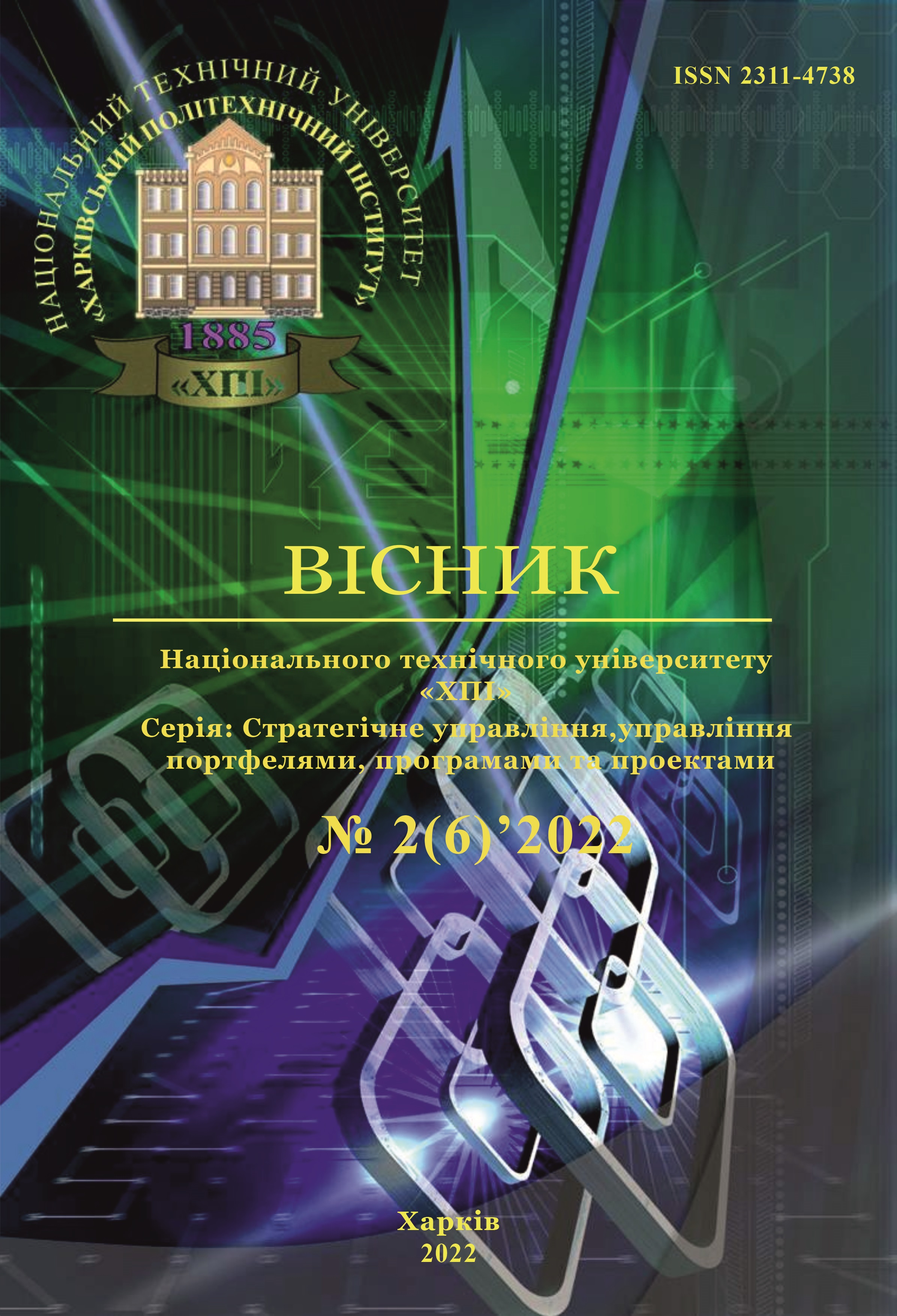FEATURES OF FORMING THE IT PROJECT MANAGEMENT TEAM
DOI:
https://doi.org/10.20998/2413-3000.2022.6.3Keywords:
IT projects; IT project management team; responsibility matrixAbstract
The analysis of formation and management of the team of IT projects is carried out. The dependence of the criteria of team formation and structure on the type of software product creation technology is shown. A comparison between the definitions "project team (executives team)" and "project management team" is presented. The paper shows the need to create an additional IT project management team to improve the efficiency of its management and ensure successful completion. The proposals are based on the results of the analysis of the real project on the basis of the responsibility matrix. It is possible to identify the shortcomings of the formed team of the IT project, in terms of implementation of project team members of different types of work, for different competencies, which reduced productivity. Based on this, another team was proposed, which included a team of managers, which gave better results in terms of cost and duration of the project. The newly formed team had greater productivity, as the channels of interaction with project managers are set up correctly. The project management team, which was added to the existing project, helped to improve all indicators of the project implementation. The use of an IT project management team will be important and necessary for teams that use Design Thinking technology. The decision on the advisability of creating an IT project management team should be based on the criteria: "advantages and disadvantages of project management efficiency". The disadvantage of using a project management team will be an increase in the number of people if the criterion was to minimize them, or an increase in the budget if it is calculated on a monthly salary of contractors. As the evaluation criteria are optimization of team management processes, application of competency approach, reduction of multitasking and professional development, the project management team, as an additional organizational structure of the project, certainly has advantages and is recommended for use.
References
A Guide to the Project Management Body of Knowledge (PMBOK® Guide). Six Edition. USA. PMI. 2017. 574 p.
Управление командой проєкта : веб-сайт. URL: https://learn.urfu.ru/resource/index/data/resource id/40080/ revision.
Формування ресурсів : веб-сайт. URL: https://stud.com.ua/21064/ menedzhment/ formuvannya finansovih_resursiv_proek.
Iorio J. et al. Precursors to engaged leaders in virtual project teams. International Journal of Project Management. No 33, 2015. РР. 395–405.
Мазур И.И., Шапиро В.Д. Управление проєктами. М.: "Омега-Л", 2010.
Katzenbach J., Smith D. The Wisdom of Teams. Boston: Harvard Buisness School Press, 1993.
Катренко А.В. Управление IT проєктами: Навч. посіб. К.:2013. 303с.
Waterfall методологія розробки: QAEvolution. : веб-сайт. URL: https://qaevolution.ru/metodologiya-menedzhment/waterfall/
Agile: Atlassian : веб-сайт. URL:https://www.atlassian.com/ru /agile
Scrum: Atlassian. : веб-сайт. URL: https://www.atlassian.com/ru/ agile/scrum
Kanban: Atlassian. : веб-сайт. URL: https://www.atlassian.com/ru/ agile/kanban
Эффективное распределение ролей посредством RACI матрицы : веб-сайт. URL: https://habr.com/ru/company/infopulse/blog/ 145553/
Создание ключевых компетенций руководителей проєктов в компании : веб-сайт. URL: https://www.cfin.ru/management /people /project competence.
Близнюкова І.О., Тесленко П.О., Данченко О.Б. , Меленчук В.М. Концепція створення мінімально життєздатного продукту та дизайн-мислення в управлінні командою ІТ-проєкту. Вісник національного технічного університету «ХПІ» : Зб.наук.пр. Серія : Стратегічне управління, управління портфелями програмами та проєктами. Х.: НТУ «ХПІ». 2021. №2(4). С. 11 – 17.
Downloads
Published
Issue
Section
License

This work is licensed under a Creative Commons Attribution-NonCommercial-ShareAlike 4.0 International License.
Our journal abides by the Creative Commons copyright rights and permissions for open access journals.
Authors who publish with this journal agree to the following terms:
Authors hold the copyright without restrictions and grant the journal right of first publication with the work simultaneously licensed under a Creative Commons Attribution-NonCommercial-ShareAlike 4.0 International License (CC BY-NC-SA 4.0) that allows others to share the work with an acknowledgement of the work's authorship and initial publication in this journal.
Authors are able to enter into separate, additional contractual arrangements for the non-commercial and non-exclusive distribution of the journal's published version of the work (e.g., post it to an institutional repository or publish it in a book), with an acknowledgement of its initial publication in this journal.
Authors are permitted and encouraged to post their published work online (e.g., in institutional repositories or on their website) as it can lead to productive exchanges, as well as earlier and greater citation of published work.

